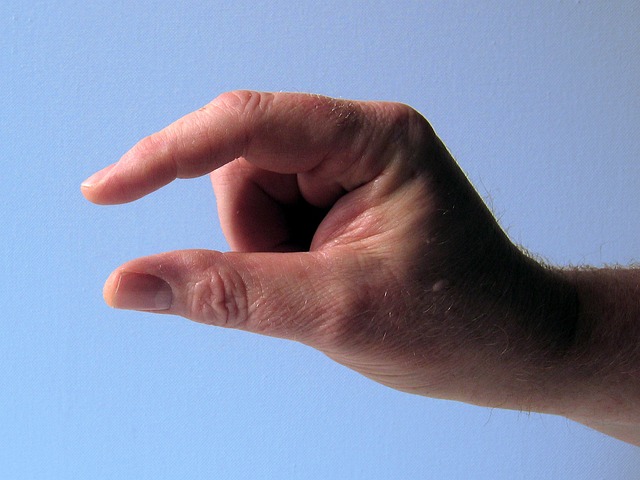Lesson 10: Creating a Business Plan
A business plan is your Roadmap, a way to keep yourself on the right path and to hit achievable goals along the way. Learning how to create a business plan will get you started to seeing your dreams and ideas become real on paper and be something to present to others around you.
Spend a little time here making your business plan. It will be the same as a Captain of a ship setting course for a far-away land and they’ll need their map to guide them on those dark nights ahead.
Let’s Dive in!
What Should a Business plan Include?
Typically, a business plan has an executive summary of the business, a Mission Statement, a Products and Services description, some market analysis, the competitive advantage, your business goals, financial highlights and you and your team if you have anyone as part of your business..
There is a lot there to unpack, so let’s work through these ideas together.
The Executive Summary
An executive summary is an overview of your whole business plan. It should highlight key points in a way that’s easy to understand.
Think of the elevator pitch example. You have 10-20secs to explain your idea to a person in a lift and you need to give a summary of what you have to offer.
As we cover different aspects of the business plan, notice how the summary will highlight those points and give a clear overview of your business.
Keep it simple, don’t waffle, and use just a few examples from your main business plan.


The Mission Statement
A mission statement should be clear, memorable, and motivational. It should help focus your energy and communicate you business purpose to everyone around you. Family, friends, customers, banks, the world.
A good mission statement communicates what a business does, who it serves, and how it serves them, often reflecting the company’s values and culture.
Here are examples of Mission statements:
– Nike: “To bring inspiration and innovation to every athlete* in the world. (*If you have a body, you are an athlete.)”
– Patagonia: “We’re in business to save our home planet.”
– Starbucks: “To inspire and nurture the human spirit – one person, one cup and one neighbourhood at a time.”
Products and Services
The Products and Services section of a business plan should describe what your business offers. It explains what you sell or what services you provide, highlighting the features and benefits of your products or services. It should include:
- Description: What the product or service is you are selling
- Features: Key characteristics or attributes of the product or service
- Benefits: Explain how the product or service helps customers.
- Unique Selling Points (USPs): What makes your product or service different or better than competitors.
- Pricing: How much it costs.
- Production/Delivery: How the product is made or how the service is delivered to your customers.
- Future Plans: Include your plans for new products or services in the future.
Including these details in your business plan helps potential investors and partners understand what you offer and why your products or services are valuable.

To give an example for a Bakery Market stall:
- Description: Our bakery offers a variety of baked goods, including bread, pastries, cakes, and cookies.
- Features: We use organic ingredients, and all items are baked fresh daily.
- Benefits: Customers enjoy healthier, high-quality baked goods with no preservatives.
- Unique Selling Points: Our bakery is the only one in town that uses 100% organic ingredients and offers gluten-free options.
- Pricing: Prices range from £1 for a cookie to £15 for a specialty cake.
- Production/Delivery: All items are baked in-house and can be purchased in-store or ordered online for home delivery.
- Future Plans: We plan to introduce a line of vegan baked goods next year.

Market Analysis
Market analysis describes your industry, target market, and competitive landscape for your business. It helps you understand who your customers are, what they want, and how your business can meet their needs better than competitors.
This analysis should try to cover details about the market size, growth potential, customer demographics, buying habits, and competitor strengths and weaknesses.
This can be formulated when you are visiting markets or through online research.
An example from a Soap Vendor may look a little like this:
- Industry Overview: The market for natural and handmade soaps is growing as consumers become more aware of the benefits of natural skincare products. The global natural soap market is expected to grow at a steady rate over the next five years.
- Target Market: Our target market consists of health-conscious consumers aged 25-45 who prefer natural and eco-friendly products. These customers are typically found in urban areas and have a moderate to high income.
- Customer Demographics:
– Age: 25-45 years old
– Gender: Predominantly female
– Income Level: Middle to upper-middle class
– Location: Urban and suburban areas
– Lifestyle: Health-conscious, environmentally aware, prefers natural and organic products - Market Size and Growth Potential: The natural soap market in our city is estimated to be worth £2 million annually, with a growth rate of 10% per year. This growth is driven by increasing consumer awareness about the benefits of natural ingredients and a rising preference for sustainable products.
- Customer Needs and Preferences:
– Natural Ingredients: Customers prefer soaps made with natural, organic ingredients.
– Skin Benefits: Soaps that offer specific benefits, such as moisturising or soothing sensitive skin.
– Eco-Friendly Packaging: Biodegradable or recyclable packaging is important to our customers. - – Unique Scents and Varieties: A variety of scents and soap types, such as exfoliating or creamy, attract customers.
By conducting this market analysis, we can better understand our customers and position our soap products to meet their needs effectively. This will help us capture a significant share of the growing natural soap market.
Competative Advantage
A competitive advantage is what makes your business stand out from the competition. It’s the unique feature, benefit, or aspect of your product or service that gives you an edge in the market.
This advantage can come from various factors, such as lower prices, higher quality, unique products, superior customer service, or innovative technology. Highlighting your competitive advantage in a business plan shows not only potential investors and stakeholders, but confirms to you, why customers would choose your business over others.

As an example a Christmas Card Stall Owner may write:
Our Christmas card stall offers a unique blend of hand-crafted, customisable cards that are not available from other vendors in the market. Each card is made using eco-friendly materials, and we provide personalised messages and designs tailored to individual customer preferences.
Unlike mass-produced cards found in retail stores, our cards offer a personal touch and higher quality, appealing to customers looking for special and meaningful holiday greetings.
Additionally, we offer an on-the-spot customisation service where customers can have their cards personalised with names, dates, and special messages while they wait. This service ensures that every card is unique and perfectly suited to the recipient, setting us apart from competitors who only sell pre-made cards.
Our commitment to sustainability and personalisation attracts a niche market of eco-conscious and discerning customers who value originality and thoughtfulness in their holiday greetings. This unique offering allows us to command a premium price and build a loyal customer base that returns year after year.

Business Goals
Your Business Goals section should outline what your business aims to achieve in the short term and long term. It provides clear, measurable objectives that guide the business’s direction and help track progress. You should think SMART when including:
- Specific Goals: Clearly defined and precise objectives.
- Measurable Goals: Criteria for measuring progress and success.
- Achievable Goals: Realistic targets that can be accomplished.
- Relevant Goals: Objectives that align with the business’s overall mission and vision.
- Time-Bound Goals: Deadlines for achieving each goal.
An example from a Vegetable Stall Vendor
Business Goals
Short-Term Goals (Next 12 Months)
- Increase Weekly Sales: Boost weekly sales by 5% through targeted promotions and expanding our product range to include more exotic vegetables and herbs.
– Measurement: Track sales data weekly to ensure a consistent increase, aiming for an additional £50 in sales per week.
– Deadline: Achieve this goal by the end of the next 12 months. - Enhance Market Presence: Secure a spot at two additional local farmers’ markets to increase visibility and customer base.
– Measurement: Successfully obtain market permits and set up stalls in the new locations.
– Deadline: Accomplish this within the next six months. - Improve Customer Loyalty: Launch a loyalty program to encourage repeat business, aiming to sign up 100 customers.
– Measurement: Track the number of loyalty program sign-ups and repeat customers.
– Deadline: Implement the program within three months and achieve the target sign-ups within nine months.
Long-Term Goals (Next 3-5 Years)
- Expand Product Line: Introduce organic and home-grown vegetable options to meet increasing customer demand for organic produce.
– Measurement: Increase the proportion of organic products to 40% of total offerings.
– Deadline: Accomplish this within the next three years. - Establish a Delivery Service: Set up a local delivery service for customers, allowing for online orders and subscriptions.
– Measurement: Launch the service and achieve a steady stream of 50 delivery orders per week.
– Deadline: Implement and fully operationalise this service within the next two years. - Increase Annual Revenue: Double annual revenue from £20,000 to £60,000 by expanding operations, improving marketing efforts, and increasing customer base.
– Measurement: Monitor annual revenue growth, with regular financial reviews to ensure targets are met.
– Deadline: Achieve this financial goal within the next five years.
Financial Highlights
The financial highlights of a business plan give a snapshot of how a business plans to make and manage money. These highlights usually include:
- Revenue Projections: How much money the business expects to make.
- Costs and Expenses: What the business will spend on materials, rent, labor, and other necessary items.
- Profit Margins: How much money the business expects to keep after paying all expenses.
- Break-even Analysis: When the business will start making a profit, covering all its costs.
- Cash Flow: How money will come in and go out over time.

As an example of a homemade chutney market stall owner, it may look like this:
- Revenue Projections: You expect to sell 100 jars of chutney each weekend at £5 per jar. So, your weekly revenue would be £500.
- Costs and Expenses: Costs include ingredients (e.g., £50 per week), packaging (£20 per week), and a market stall fee (£30 per week). You also have other expenses like a £10 weekly fee for a stall setup and £20 for local permits.
Total weekly expenses: £50 (ingredients) + £20 (packaging) + £30 (stall fee) + £10 (setup) + £20 (permits) = £130
- Profit Margins: Subtract your expenses from your revenue to find out your profit.
Weekly profit = £500 (revenue) – £130 (expenses) = £370
- Break-even Analysis: To figure out how long it will take to start making a profit, consider your initial setup costs, such as buying jars and initial ingredients. Suppose you spend £200 on these. Your weekly profit of £370 means you’ll cover that £200 in less than a week (about half a week).
- Cash Flow: Ensure you have enough cash to cover your initial setup costs and weekly expenses until your revenue starts coming in. For instance, you need at least £200 upfront for initial costs and £130 to cover the first week’s expenses.
So, the financial highlights show you expect to earn a good profit each week after covering your costs, and you’ll quickly cover your initial setup expenses.

The Team
The team in a business plan describes the people who will run the business. It includes their roles, responsibilities, skills, and experience.
This section highlights who and what you need to run a successful business. That you have help at hand and you know what you need to develop.
You want to achieve your goals and you have a good idea of the strong and capable team needed to achieve it.
An example of an Artist selling their handmade pottery at the local Farmers Market
- Owner/Artist (Melissa):
– Role: Melissa is the main creative force behind the business. She creates all the pottery pieces and manages the overall direction of the business.
– Responsibilities: Designing and producing pottery, setting up the stall at the market, managing finances, interacting with customers, and handling marketing (social media, promotions, etc.).
– Skills and Experience: Melissa has a degree in Fine Arts and five years of experience in ceramics. She has participated in various local art fairs and has a strong following on social media. - Sales and Marketing Assistant (Amanda):
– Role: Amanda helps with sales and marketing efforts to increase visibility and sales.
– Responsibilities: Assisting at the market stall, managing social media accounts, creating promotional materials, and organising special events or sales.
– Skills and Experience: Amanda has a background in marketing and customer service. She has worked with small businesses to boost their online presence and has a knack for engaging customers. - Financial Advisor (June):
– Role: June provides financial guidance to ensure the business remains profitable and financially healthy.
– Responsibilities: Overseeing budgeting, bookkeeping, and financial planning. Advising on pricing strategies and investment opportunities.
– Skills and Experience: June is a certified accountant with ten years of experience working with small businesses and creative entrepreneurs. - Logistics Manager (Paul):
– Role: Tom handles the logistics of transporting pottery and setting up the market stall.
– Responsibilities: Ensuring all products are safely transported, setting up and dismantling the stall, and managing inventory.
– Skills and Experience: Paul has experience in logistics and event setup. He is detail-oriented and has worked in similar roles for other market vendors.
Conclusion
A business plan is a document that explains how your business will work and succeed. It includes details about what the business will sell, who will buy it, how much money it will make, and who will run it.
A good business plan helps guide your business and shows others you are serious. It helps when asking for investment and shows your idea is well thought out and has a good chance of success.
To download a template to get you started right away click here.
It will be great to hear from you and how this has helped sharpen your dreams and goals over on Facebook.
Quick Quiz
- What are the primary components of a business plan?
- Why is a business plan important for potential investors?
- How can a business plan help in managing unexpected challenges?








